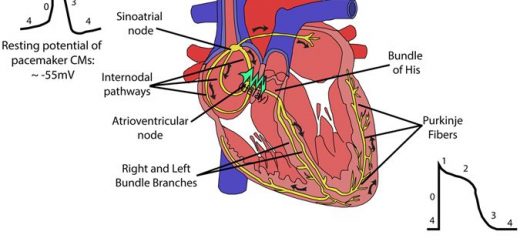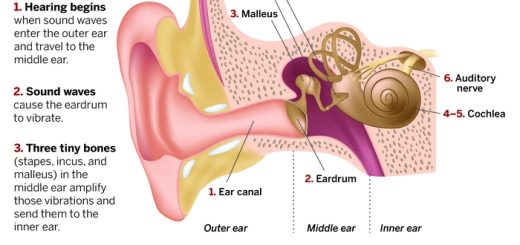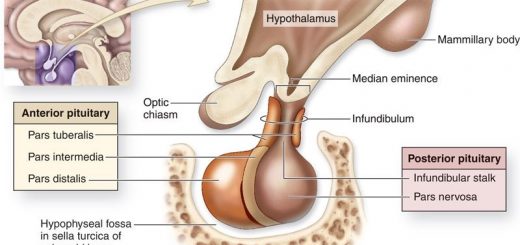Small intestine function, anatomy, parts, Arterial supply of the duodenum, midgut and hindgut
The small intestine connects the stomach and the large intestine, It is about 20 feet long and folds many times to fit inside the abdomen, The small intestine has three parts: the duodenum, jejunum, and ileum, Small intestine helps to digest food coming from the stomach, It absorbs nutrients (vitamins, minerals, carbohydrates, fats, proteins) and water from food.
Small Intestine
The small intestine, is a part of the gut, extending from the pyloric end of the stomach to the beginning of the large intestine at the ilio coecol junction. Its length is about 6 meters.
Divisions
- Fixed part (Duodenum)
- Mobile part (Jejunum + lleum).
Duodenum
Duodenum is the shortest, widest, and most fixed part of the small intestine.
Position and Shape
- Follows a C-shaped course around the head of the pancreas.
- Fixed to the posterior abdominal wall (retroperitoneal), occupies the umbilical regions.
- Extends from the pylorus to the duodenojejunal flexure.
Parts of the duodenum
1. First part
It is two inches long, its 1st inch is mobile because it is to rally covered by peritoneum. (Surface anatomy) it begins at the pylorus, 1/2 an inch to the right of the median plane at the level of L1 (transpyloric plane).
Relations
- Anteriorly: quadrate lobe of the liver and gallbladder.
- Posteriorly: neck of the pancreas, (at gashro duodenal junction) portal vein, bile duct, and gastro-duodenal artery.
- Inferiorly: head of the pancreas.
- Superiorly: related to the epiploic foramen.
2. Second part
It is three inches long and descends vertically from the level of L1 to the level of L3. This part is only covered by the peritoneum anteriorly.
Relations
- Anterior: right lobe of the liver, gall bladder, transverse colon, and coils of jejunum.
- Posterior: hilum of the right kidney.
- Lateral: hepatic flexure of the large intestine.
- Medial: head of the pancreas, bile duct, and pancreatico-duodenal arteries.
3. Third part
It is four inches long and lies horizontally opposite to the level of L3.
Relations:
- Anterior: superior mesenteric vessels in the root of the mesentery of the small intestine and coils of the small intestine.
- Posterior: it is related to the following structures from the right to the left side: right ureter, right psoas major, right, gonadal vessels, IVC, aorta, and inferior mesenteric artery.
- Superior: head of the pancreas.
- Inferior: coils of the small intestine.
4. Fourth part
It is one inch long, It ascends from the level of the third to the level of the second lumber vertebra one inch to the left of the median plane at the dudeno-jejunal flexure.
Relations
- Anterior: transverse colon and transverse mesocolon.
- Posterior: left sympathetic chain, left psoas major, left gonadal and left renal vessels.
- Medial: head of pancreas and aorta.
- Lateral: loops of jejunum.
The duodenojejunal flexure is fixed by the Treitz ligament to the crus of the diaphragm.
Arterial supply of the duodenum
- Supra-duodenal artery: from the hepatic artery proper (celiac trunk).
- Superior pancreatico-duodenal artery: from gastro-duodenal (celiac).
- Inferior pancreaticoduodenal artery: from the superior mesenteric artery.
Venous Drainage
The veins follow arteries and end in the portal circulation
Lymphatic drainage: into the coeliac and superior mesenteric lymph nodes.
Arterial supply of the alimentary canal
When the disposition of the peritoneum in the adult is clear, the course of the three ventral branches of the aorta to the gut can be followed simply. They are distributed subsequently to the foregut, midgut, and foregut.
Arterial supply of the foregut Coeliac trunk
It is the artery of the foregut, and it divides into three branches which supply the alimentary canal down to the opening of bile duct, and liver, spleen and pancreas. It arises from the front of the aorta opposite the upper part of the body of the first lumbar vertebra. It is a short wide trunk, The semilunar sympathetic (coeliac) ganglia lie on each side of the artery and send nerves to the artery which are carried along all its branches.
Branches
It appears at the upper border of the pancreas and divides immediately into its three branches:
a) Left gastric artery: It gives an oesophageal branch to the lower part of oesophagus, It then enters between the two layers of the lesser omentum and turns to the right along the lesser curvature. It anastomoses with the right gastric artery.
b) Splenic artery: It runs above the pancreas then it turns forward in the lieno-renal ligament to the hilum of the spleen, Here it breaks up into four or five short branches to the splenic substance.
Branches:
- Pancreatic branches: They are the main source of arterial supply to the pancreas.
- Left gastro-epiploic artery: It passes to the greater curvature of the stomach between the layers of greater omentum.
- Short gastric arteries: They are short arteries that pass to the fundus of the stomach in the gastrosplenic ligament.
c) Hepatic artery: It turns forward at the opening into the lesser sac and curves upwards between the two layers of lesser omentum at its free edge, Here it meets the common bile duct and lies on its left side, both in front of the portal vein.
Branches:
- Right gastric artery: It turns into the lesser omentum and anastomoses with the left gastric artery.
- The gastro-duodenal artery passes down behind the first part of the duodenum, to the left of the portal vein, and divides into two branches:
d) The right gastro-epiploic branch: It turns to the left to enter between the two layers of the greater omentum and runs on the greater curvature to anastomose with the left gastro-epiploic artery.
e) Superior pancreatico-duodenal artery: It passes between the head of the pancreas and the duodenum and anastomoses with inferior pancreatico-duodenal branch of the superior mesenteric artery.
Termination: It divides into right and left hepatic arteries, the right hepatic artery gives the cystic artery to the gall bladder.
Arterial supply of the midgut
The artery of the midgut is the superior mesenteric, which supplies the gut from the entrance of hepato pancreatic duct to a point just short of the splenic flexure of the colon.
Superior mesenteric artery
Position and relations: It arises from the front of the aorta at the level of the lower border of the body of the first lumbar vertebra, It is directed downwards behind the neck of the pancreas, With the superior mesenteric vein on its right side then it lies in the groove between the neck and the uncinate process of the pancreas, The two vessels then pass over the third part of the duodenum and enter the upper end of the mesentery of the small intestine, They pass down to the right along the root of the mesentery and end at the ileum 2 feet proximal to the caecum.
Branches
1- Inferior pancreatico-duodenal artery: It supplies the duodenum below the entrance of the bile duct, It runs in the curve between the duodenum and the head of the pancreas and anastomoses with the superior pancreatico-duodenal artery.
2- Jejunal and ileal arteries: They arise from the left of the main trunk and pass between the two layers of the mesentery, They join each other in a series of anastomosing loops which form arterial arcades, From the arcades, straight arteries pass to the mesenteric border of the jejunum and ileum.
3- Ileo-colic artery: It arises from the right side of the superior mesenteric trunk low down in the base of the mesentery, It runs to the ileo-colic junction, where it gives:
- lleal branch: It anastomoses with the terminal branch of the superior mesenteric artery.
- Colicbranch: It runs up along the left side of the ascending colon to anastomose with the right colic artery.
- Anterior caecal artery: It ramifies over the anterior surface of the caecum.
- Posterior caecal artery: It supplies the posterior wall of the caecum.
- Appendicular artery: It passes towards the tip of the appendix in the mesoappendix.
4- Right colic artery: It arises in the root of the mesentery from the right side of the superior mesenteric artery, It divides near the left side of the ascending colon into two branches:
- The descending branch runs down to anastomose with the colic branch of the ileocolic artery.
- The ascending branch runs up to anastomose with a branch of the middle colic artery.
5- Middle colic artery passes forwards between the two layers of the transverse mesocolon and at the intestinal border of the transverse mesocolon, it divides into right and left branches that run along the transverse colon, The right branch anastomoses with the ascending branch of the right colic artery, The left branch anastomoses with a branch of the left colic artery.
Arterial supply of hindgut
The artery of the hindgut is the inferior mesenteric which supplies the whole extent of the hindgut.
Inferior mesenteric artery
It arises from the front of the aorta at the inferior border of the third part of the duodenum opposite the third lumbar vertebra, It runs obliquely down to the pelvic brim, At the pelvic brim, it continues along the pelvic wall in the medial limb of the pelvic mesocolon as the superior rectal artery.
Branches
1- Left colic artery: It passes up to the left towards the splenic flexure. It is divided into two branches.
- The upper branch passes to the splenic flexure
- The lower branch passes transversely to the descending colon, Each of the arteries anastomoses with the left branch of the middle colic artery and with each other.
2- Sigmoid arteries: They pass forwards between the layers of the pelvic mesocolon, in which they form anastomosing loops from which vessels sink into the wall of the pelvic colon.
Branches of the superior and inferior mesenteric arteries (right, middle and left colic arteries from a continuous artery along the inner side of the colon called the marginal artery.
You can download Science online application on Google Play from this link: Science online Apps on Google Play
Posterior abdominal wall muscles, layers, blood supply & anatomy
Physiology & functions of Stomach, Composition of gastric secretion
Histological structure of stomach, Fundic glands of Stomach & Gastric musculosa
Abdomen muscles, Blood Supply of Anterior Abdominal Wall & Rectus Sheath content
Stomach parts, function, curvatures, orifices, peritoneal connections & Venous drainage of Stomach













